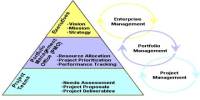Financial Performance Analysis of Prime Bank Limited
Prime Bank was created and commencement of business started on 17th April 1995. The sponsors are reputed personalities in the field of trade and commerce and their stake ranges from shipping to textile and finance to energy etc. Prime Bank has already made significant progress within a very short period of its existence. The bank has been graded as a top class bank in the country through internationally accepted CAMELS rating. The bank has already occupied an enviable position among its competitors after achieving success in all areas of business operation.
As a fully licensed commercial bank, Prime Bank is being managed by a highly professional and dedicated team with long experience in banking. They constantly focus on understanding and anticipating customer needs. As the banking scenario undergoes changes so is the bank and it repositions itself in the changed market condition.
Prime Bank offers all kinds of Commercial Corporate and Personal Banking services covering all segments of society within the framework of Banking Company Act and rules and regulations laid down by our central bank. Diversification of products and services include Corporate Banking, Retail Banking and Consumer Banking right from industry to agriculture, and real state to software. Prime Bank’s current capital adequacy ratio of 9.96% is in the market. In spite of complex business environment and default culture, quantum of classified loan in the bank is very insignificant and stood at less than 0.96%.
Objective of the report
Broad Objective:
- To get an overall idea about the financial performance of Prime Bank Limited.
- To relate the theoretical knowledge to the original financial data of Prime Bank Limited.
Specific Objective:
- To know the financial performance of Prime Bank Limited in the last five years.(2007-2011)
- To present my observation and suggestion to the bank.
- To identify the strength and weakness of bank based on the financial performance in the last five years (2007-2011).
Methodology
In order to generate this report both Primary data and secondary data have been used. The sources that have been used to gather and collect data is given below-
Primary Source
- Personal interview
- Observation
Secondary Sources
- Annual Report of Prime Bank Limited from 2007-2011
- Brochures of Prime Bank Limited
- Different written document of Prime Bank Limited
- Newspaper
- Web site
Corporate Banking
Corporate banking is the center of all corporate lending operation of PBL. Major part of the bank’s asset portfolio falls under this segment of credit. Several strategic business units (SBUs) are working under the umbrella of corporate Banking division. They are-
- General Credit Unit
- Export Finance Unit
- Lease Finance Unit
- Structured Finance Department
During the year 2011, the bank continued playing a major role in supplying business capital, arranging and raising finance while maintaining a high standard of diligence prosper and build social and physical infrastructure of the country.
A closer look at sectoral allocation of corporate portfolio reveals that it is well diversified in various sectors of our economy which ensures diversification of risk associated with loans/investment. Business strategy for the year 2012 is to give preferences to the customer giving higher yield earning from multiple sources. CBD planned to increase portfolio in the ship building, jute, power & renewable energy and environment friendly projects. Regular review of the loan pricing considering market situation and recovery of NPL is one of the major tasks for CBD to maintain and improve the asset quality.
Retail Banking
Retail Banking Division of PBL has passed another successful year both in terms of assets and liability business procurement. This has been possible because PBL is different from the competitors and customers can easily differentiate bank’s products from others. The agility in terms of expanding the delivery channels, augmenting value added products, creating new avenues of services, inventing new alternative delivery channels for expanding bank’s customer base in distant urban and rural areas were the contributing factors for satisfactory performances.
Prime Bank Limited is one of the largest providers of retail credit in Bangladesh and growth of retail asset was 17.74 percent during 2011. In terms of mix, Home loan was 45.97 percent, Car loan 19.57 percent, any purpose loan and others were 34.46 percent. Emphasis was given on mobilization of current and savings accounts and more than 100 thousand Current and Savings Accounts were opened through direct relationship executive only.
SME Financing
PBL has been increasingly focusing on SME financing. Despite growing focus about small and medium enterprise in Bangladesh and consequent policy efforts in these directions, limited access to financing still forms the crux of the problem of this sector. The overriding vision of PBL is to offer congenial lending products and services so that SMEs can aspire to opportunities of growth and wealth creation. Keeping this in view, formulated a comprehensive policy on SME financing and made significant progress in financing this sector.
To inspire SME entrepreneurship for financial literacy PBL distributed tally book on the eve of Pahela Boishakh. With the use of this tally book, business owners would be able to keep their business record in a more organized way. In order to focus on push marketing the bank has implemented Direct Sales Team. This has been helped PBL to penetrate the market further and make available finance to the doors steps of small and medium enterprises.
Islamic Banking
Islamic banking operation of PBL started in the very year of its establishment in December 1995 through the opening of Islamic banking branch at Dilkusha, Dhaka. PBL is the pioneer in such a kind of blending of conventional and Islamic banking in the country which is followed by many other banks. With the passage of time, the bank now carries on its Islamic banking operations through five Islamic Branches.
Operations of Islamic banking branches are coordinated by Islamic Banking division at Head Office and supervised by Prime bank Shari’ah Supervisory Committee. Launching of Islamic Banking operation by PBL by introducing different innovative products and services based on Islamic Shari’ah got tremendous response from a considerable portion of its clientele who are eager to accept Shari’ah compliant modern and innovative banking products and services. PBL is also offering Islamic Banking products and services through Islamic banking service desks set up at its conventional banking branches.
Customer care
In today’s intensely competitive market place, most of the banks and financial institutions are striving hard to lay down their best possible efforts to be more competitive. Customers are more fragmented now and organizations are trying to get the customers’ share of mind. As a consequence, marketing efforts by organizations are more focused and market driven now.
Optimum brand visibility is needed to be on the top of mind of potential customers. Various customers care activities through marketing and other divisions were undertaken during the year. Prime Bank is a “Bank with a difference” not only in its belief, but also in its deeds. To PBL each and every customer is important, no matter how smaller he or she is.
Internet Banking
IT development team successfully replaced the Temenos internet banking module with its self developed Internet Banking software “Altitude”, which has enabled the bank to serve its customers with various real-time online banking services without requiring them to come to the bank. Now the customers can access the internet banking application using any browser from their Desktop PC, Laptop and any handheld devices like-Mobile Phone, PDA, Tablet etc. Using Altitude, customers will get the following services-
- Balance enquiry
- View FDR and deposit scheme information
- View loan information
- Transaction search
- Statement download
- Real-Time fund transfer
- Real-Time utility bill payments
- Credit card bill payments
- Fund transfer to any bank, any branch (through BEFTN)
Alternate Delivery Channels of Prime Bank Limited
The bank introduced ATM services as well for the convenience of the customers and a separate unit under the name of Alternate Delivery Channels (ADC) was opened at Head office to effectively monitor smooth functioning of these ATMs. As a newly formed division, ADC is now trying to increase alternate delivery channels as well as to offer broader services to the customers of the bank. Some of the major achievements of ADC Division in 2011 are-
- ATM Booth: As at December 2010, PBL had only 37 ATMs. But in 2011, the bank installed 50 new ATMs country wide. Now the bank has 87 ATMs in operation and these are located in the busy and preferred locations across the country. As per bank’s approved expansion plan, PBL shall install another 100 ATMs in 2012.
- ATM card: The number of ATM card was only 154,021 at year end 2010. But by year-end 2011, PBL has managed to increase this number to almost 200,000.
- Master Debit Card: The bank has launched Master Debit Card in January 2011 and almost 20,000 cards have been issued in 2011. With this card the following facilities can be achieved
- Customers can access any Master ATM terminal
- Customers can access any Master POS terminal
- SMS Banking: Now-a-days Mobile phones are the easiest channels by which customers can reach the bank to access their account 24X7. So PBL introduced SMS service in July 2010. With this service, a customer can enjoy the following
Verify payment, receive status anywhere
Get alert automatically on an automatic basic when loan installments fall due and become overdue.
Save time and cost as they will minimize their visit to their respective branches for simple queries.
- Phone Banking: With IT support, ADC successfully implemented Phone Banking service in May 2011 and by year end 2011the bank has provided this service to over 1500 number of account holder. Some facilities under this service are
Account related enquiry
Debit card related enquiry
Credit card related enquiry
- Information KIOSK/Bills pay: The bank has successfully launched 4 (four) information KIOSK. PBL ATM Card and Master Debit Card holders can enjoy the following facilities through Information KIOSK:-
Account Balance Enquiry
Account statement
In addition, “Utility Bill” payment of a number of companies is also possible by information KIOSK and ATMs
- A few more services will be added soon for the customers of the bank like
oBiometric Smart Card
o Mobile Banking
oCash Deposit Machine (CDM)/Deposit KIOSK
o Mini Fast Track
Risk management
PBL has always being in the forefront of implementing different risk management tools and techniques. The risk of any banking institution may be defined as the possibility of incurring losses, financial or otherwise. Banking business is in fact a business of risk taking. So it is vital to manage all these risks efficiently to emerge as the winner out of these risk ventures. In today’s challenging financial and economic environment effective risk management is must for sustainable growth in shareholders’ value. The major areas of risk to which the activities of the banking operation are exposed to are Credit risk, Liquidity risk, Market risk, Interest rate risk and Equity risk. Market risk includes Foreign exchange risk, Interest rate risk and Equity risk.
Capital Management
Capital Management of the bank is based on the objective to maintain an adequate capital base to support the projected business and regulatory requirement. This is done by drawing an annual planned business growth vis-à-vis capital requirement. PBL recognizes the impact of shareholders’ return on the level of equity and seeks to maintain a prudent balance between TierI and Tier-II capital. As per directives of Bangladesh Bank, the banks are required to maintain capital at 10 percent of risk weighted assets from July 01 2011 under Basel-II. Tier I should be 5 percent of total capital.
The bank’s capital fund is divided into two parts- Tier I and Tier-II capital. Tier-I includes equity and Tier-II include general provision on unclassified loans and advances, revaluation reserves, unsecured subordinate debt and exchange equalization account. Total capital fund increased by Tk. 2790 million in 2011. Tier-II capital grew by Tk. 2996 million and stood at Tk. 18787 million during the year under review. Total capital fund is equivalent to 12.49 percent of total risk weighted assets.
Human Resources
PBL’s brand pledges, a bank with a difference, sets out its deep and lasting commitment to people, and to building a sustainable and responsible business in the long run in a unique way.
And it is this commitment that not only sets Prime Bank Limited as a bank but also as an employer. BY developing strengths of the human capital, valuing their unique perspectives and enabling them to make a difference to our success, PBL will help them to fulfill their latent talent. Getting the best from this opportunity will rely on them sharing their commitment to delivering performance for its shareholders; building lasting relationships while demonstrating a passion for helping it do better for customers and society.
With 2,292 people, operating through 119 branches the bank prides itself on being a truly peerless organization, combining the expertise and endeavor of experienced and fresh talents.
Future Outlook
The financial sector of the country is also expected to continue showing good result during 2012. The banking sector is still the most promising and structured sector of the economy. It is also the most preferred sector for the investors of the courses as increased remittance flow, good export performance and steady industrial growth, accelerated performance in SME and customer loan, implementation of risk management and corporate governance are likely to have positive impact in the performance of the banking sector. PBL is well positioned to meet the challenges of 2012 and will continue to strive to innovate and capture opportunity for growth and value creation.
The Bank will continue to harness the potentials of retail, credit card, and SME, agriculture and remittance market. The bank will focus on its IT developments and large customer base to generate more business from existing and potential customers. However continued pressure on Interest margins, fees, exchange earnings and increased Provision requirement for retail, credit card, SME and off-balance sheet exposure and compliance with Basel-II will pose a challenge to the financial sector.
Liquidity analysis of Prime Bank Limited 2007-2011
Cash Ratio analysis: In the Cash ratio of Prime Bank Limited it is noticed that the cash ratios from 2007-2011 are 7.68%, 8.18%, 9.58%, 7.69%, 8.45% respectively. There was a normal trend of change between 2007-2008 and 2010-2011 but there was a remarkable change in the cash ratio in 2009. The reasons for this high change was-
- Vault Limit of several branches was increased.
- Number of ATM booths of Prime Bank Limited was increased.
In 2009 the ratio was 9.58% but in 2010 it falls to 7.69%. The reason for this sudden drop in
PBL’s ratio are-
- Due to the inflation in money market in 2010 the amount of the cash in market was increased which cause inflation in the market. For this reason like many other banks PBL also increased the deposit rate. For this reason amount of deposits increased in an increasing way but the cash in hand of increase in a decreasing way. For this reason, cash ratio in 2010 was decreased to 7.69%.
Loan to deposit ratio analysis: The Loan to Deposit ratios of Prime Bank Limited in last five years were 81.8%, 85.38%, 83.45%, 93.16% and 87.23%. From the changing of these ratios it is seen that there is a normal trend of increase and decrease of ratio but in 2010 there is a bog change in “Loan to Deposit ratio”.
- This situation occurs when loan increase in a great scale or the deposit decrease in a great scale.
- From the annual report of Prime Bank Limited it is seen that there were no such situation in the last five years.
- The only reason for the big change in Loan to Deposit ratio in the year 2010 was-the maturity mismatch of loans and deposits. That means in 2010 Prime Bank gave a large amount of loan to its customers for long term. That means it took lot of time to regain the loans in 2010. On the other hand deposits in 2010 were mostly of short terms. For this reason, there were sudden large amount of money withdrawal in 2010. For this maturity mismatch of short term deposits and long term loans the Loan to Deposit ratio increased alarmingly in 2010.
Earning Performance analysis of Prime Bank Limited 2007-2011
Return on asset: In the year 2007 the return on assets of PBL was 1.99%. From that in 2008 the ratio falls to 1.30% because net income of PBL decreased from 1401 to 1232 million. The reasons for this decreased amount of net income are-
- The increase of the net interest income occurred in a decreasing way.
- For these reason mentioned above net income decreased in 2008 that results ROA decrease from 1.99% to 1.30%. On the other hand in 2009 there is a huge change in ROA of PBL. It increased again in 2009. This situation occurred for some reasons-
- Net interest margin increased in an increasing order and increase in a great scale from 1970 million to 2430 million.
- For these reason ROA in 2009 changed in a huge percentage in 2009.
Return on Equity: ROE of Prime Bank Limited in the last five years were 30.68%, 20.58%, 30.19%, 21.65% and 20.32%. Here it is seen that ROE of Prime Bank Limited in 2007 was 30.68% which declined to 20.58% in 2008. This situation occurred because in 2008 Net Income decreased to 1232 million from 1401 million. On the other hand the average equity of PBL in 2008 increased because a good amount of retained earnings add as dividend to the total equity of 2008. That made an increase in the equity level of Prime Bank Limited. Due to these two situations Return on Equity decreased in 2008.
Again in 2009, the ROE increased to 30.19%. This situation occurred because there is a huge increase both in the Net Income and Average Equity in 2009. Both of the items increased in a increasing order. Net income increased from 1232 million to 2784 million and Average Shareholders’ Equity increased from 5985 million to 9221 million. Here in 2009 the Average Shareholders’ Equity also changed because a large number of dividends are declared to the shareholder of Prime Bank Limited. The trend of declaring a large amount of dividends also continued in 2010. On the other hand in 2010 numbers of outstanding shares are also increased.
In 2010 Net income also increased but in a decreasing order. In 2009 it was 2784 million and in 2010 it was 3101 million. For these two reasons ROE in the 2010 was 21.65%. In 2011 the ROE of PBL was also decreased and the reason was fully similar to 2010.
Net Interest Margin: In 2007 the net interest margin ratio of PBL was 2.71% which fall in 2008 to 2.07% and maintain the steadiness in 2009 also. Due to increase in the loans and advances in 2010 the amount of interest income was also increased compare to the interest expense. Total asset of PBL was also increased in 2010 but compare to the interest income it was a bit slower. For this reason net interest margin change in a large scale in 2010 compare to the previous year’s change.
Other Operating Income to Total Assets: Other Operating Income to Total Assets ratios of PBL were- 0.59%, 0.66%, 0.54%, 0.41%, 0.37%. All the ratios are very small because operating income is very small part compare to the Total assets of the bank. Total Assets of PBL increased every year from 2007 to 2011.
In case of other operating Income, in 2008 it was higher than the other operating income in 2007. This is happened because credit card income, gain from selling treasury bonds/shares increased.
As in many sectors income increase that’s why other operating income also increased. That increase in other operating income caused an increase in the operating income to total asset ratio in 2008 to 0.66%. From 2009 to 2011 there was a continuous trend of decreasing the ratio. This occurred because the Total Assets increased in an increasingly every year from 2009 to 2011. On the other hand, other operating income had a very small growth because some of the items of other operating income had a very small growth because some of the items of income was gradually decreasing like-
- Credit card commission income-This income was reducing from year to year because there are so many competitors in this sector. Many banks are providing various types of credit card now-a-days.
- Locker income-Many customers are less interested to keep their valuable belongings in banks for extremely personal reasons. This also decreased the amount of locker income.
Return on Loans: The Return on Loans ratios of Prime Bank Limited in the last five years are- 11.88%, 11.95%, 12.13%, 10.40%, and 11.97%. From the trend it is clear that there is a normal trend of changing the return on loans ratio in every year. In 2007 and 2008 there is a very small change but in 2009 the change is a bit higher compare to the last two years. This situation occurred for a particular reason. That is-
- Amount of given loans was increased to 89252 million and for this reason return on loans were also increased.
- On the other hand there was no repayment of the loan. For this reason, interest earned on loans was also increased. In 2010 the return on loans ratio again decreased to 10.40%. This situation occurred because-
- There was some amount of loan repayment at that time. That’s why return on loans was decreased along with the amount of loans in the market. In 2011 the ratio was again increased. Here the reasons were just like the reasons for which in 2009 the ratio was increased.
Capital Adequacy ratio analysis of Prime Bank Limited 2007-2011
Loan loss Provision to Total Loans: The higher the loan loss provision ratio means the bank is in a risky position in order to regain the loan from the clients. On the other hand, lower the ratio means the bank is in a less risky position in order to regain loans from customers.
From the loan loss provision to total loan ratio of Prime Bank Limited it is seen that in 2007 it was 1.58% and in 2008 suddenly it increased to 1.84%. This happened because-
In 2008 the ratio was highest because a high amount of loans were given to the customers for long term. For this reason the probability of regain loans from customers was very low. In that state the amount of bad or doubtful loans increased in a large scale in 2008.
After that from 2009 to 2011 the ratio changes in a decreasing manner. The main reason for this matter is-
- There were continuous repayments of loans in a large scale at that time. For that reason provision for bad or doubtful loans was low. In this way the ratio of loan loss provision was also very low.
Earning Assets to Total Assets ratio: Earning Assets ratio of Prime Bank Limited in the last five years are-91.47%, 90.79%, 88.06%, 89.14%, 88.17%. From the changing pattern of the ratio of PBL it is seen that Earning Assets to Total Assets ratio decreased from year to year. In 2010 it increased a little bit and again it decreased in 2011. The ratio was in a decreasing pattern because-
- The amount of total assets increased to a great scale every year compare to the earning assets of PBL.
- Total Assets of the PBL was increased every year because the number of branches of Prime Bank Limited increased every year that results in the increase of the fixed assets of the bank. As the fixed assets of the bank increased in this way so the total assets also increased.
- Loans are also regarded one of the earning assets of a bank. In 2010 a huge amount of loans are given to the customers. For this reason a good amount of interest was added that increased the amount of earning asset. For this reason in 2010 the earning asset ratio was a bit high than 2009.
- On the other hand in 2010 the growth of the fixed asset was slower than 2009. For this reason in 2010 the earnings ratio increased a bit high.
- For all the reasons mentioned above earning asset ratio of Prime Bank Limited changes year to year from 2007-2011.
Capital Adequacy ratio: The capital adequacy ratios of Prime Bank Limited from 2007- 2011 are- 9.50%, 9.26%, 14.20%, 9.12% and 9.85%. From last five years’ ratio it is seen that in 2009 the ratio was very high and in 2010 the ratio was extremely low compare to 2009. The reasons behind this are-
In 2009, most of the assets in the hand of Prime Bank Limited were in the form of cash and government bond. As these two items bear very low risk that’s why risk weighted assets of PBL were very low. Equity capital of PBL was in very good amount in comparison with the risk weighted assets. Both of these factors made the capital adequacy ratio very high and that is 14.20%.
- Again in 2010, there was sudden downward trend in the capital adequacy ratio of Prime Bank Limited. This occurred because in 2009 there was a high ratio of customer loan given to the large number of customers. Besides this, there was also good number of mortgage loan given to the customers. For all these, the risk weighted assets increase to a great scale. Compare to that the equity capital of PBL have not changed much.
- For all the reasons mentioned above the capital adequacy ratio fluctuates from year to year.
Recommendation
Some recommendations based on the financial performance of Prime Bank Limited’s financial performance are given below-
- Before giving long-term loan a bank should consider that whether a bank has long term deposit or not. Otherwise the bank will surely face the liquidity problem.
- A bank should increase the non-funded income in order to increase the operating income ratio
- After giving the loan to the customers, a banker should also perform certain duties to the customers to decrease the bad debt problem. Like-monitoring, supervising and follow up the loan that is taken by the customers.
- Bangladesh Bank should impose the rule of uniformity for all types of schemes. By this way customers can decide from where they will receive service based on the service quality and organizational environment.
- Director’s interference in case of giving loan should be lessening because in this way risk may increase and bad debt may also increase.
- “Employee Recruitment Process”- should be done in a fare process so that appropriate and talented employees are selected through the recruitment process and increase the productivity and quality of the service.
Conclusion
Prime Bank Limited is one of the leading commercial banks in our country. In all economic condition of our country Prime Bank Limited has been working with great confidence and competing tremendously with Government oriented bank, local commercial banks along with the multinational banks also. Prime Bank Limited always tried its level best to perform financially well. In spite of trying to do well in some aspects Prime Bank Limited faced some financial problems from time to time. Some of the problems were-excessive bad loans, shortage of loans and advances, scarcity of cash in hands due to vault limit etc. These problems arouse time to time due to economic slowdown, interest rate fluctuation, emerging capital market, inflation in the money market and so on. Fighting with all these problems and competing with other banks every moment the bank is trying to do better to best. If this thing continues we hope that Prime Bank Limited will develop even more in the future.
















